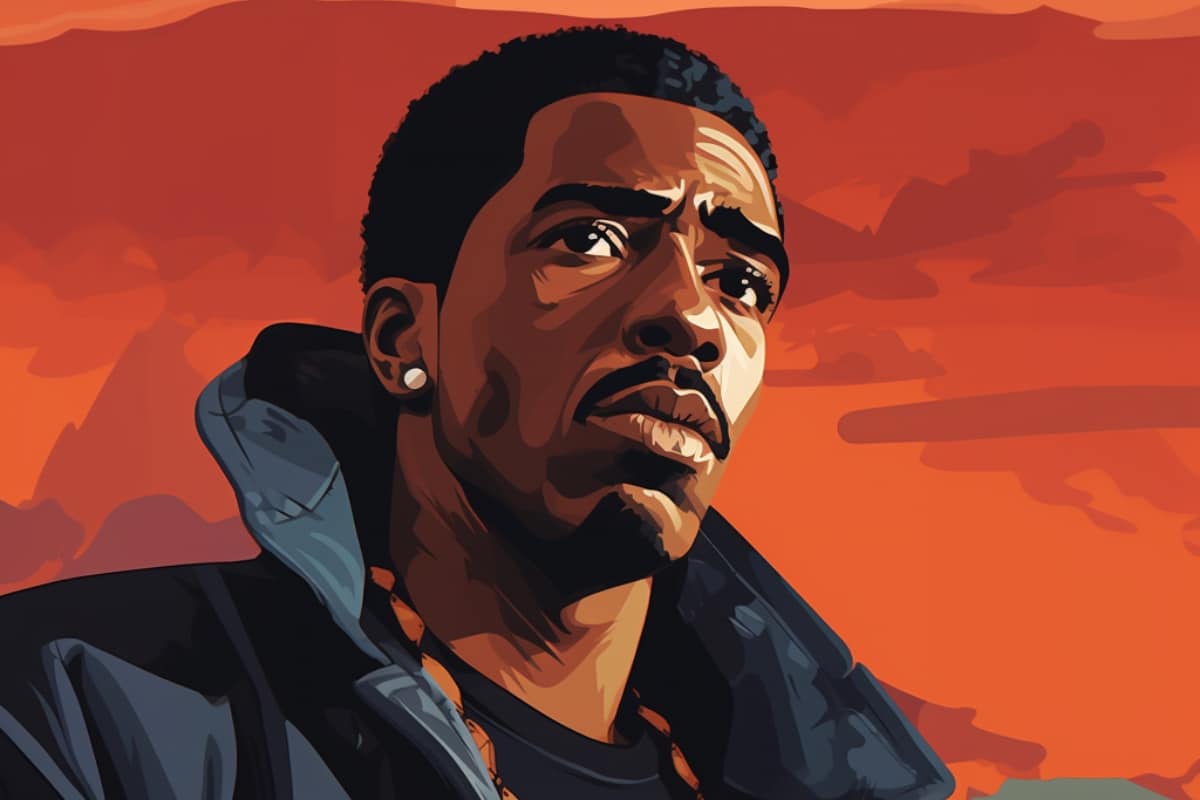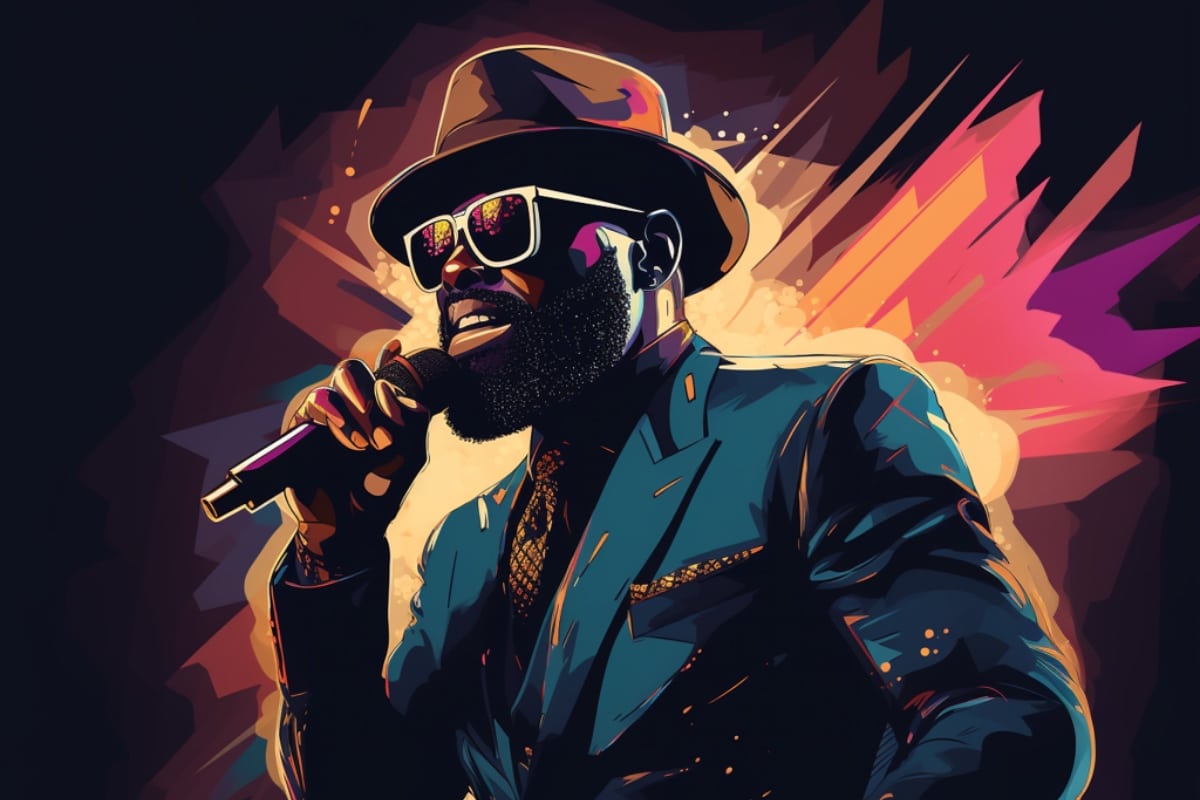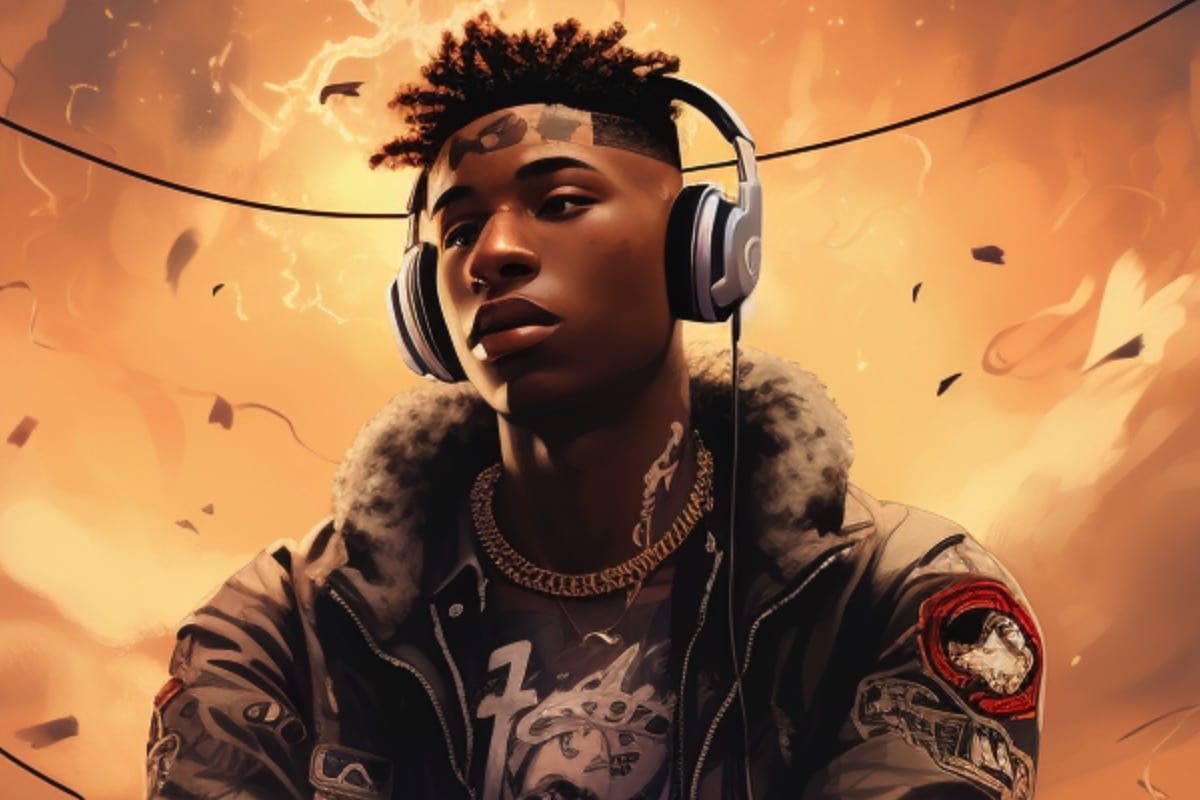When you’re talking hip hop, it’s always gotta start with the old school. Those pioneering mic controllers who laced the blueprints of the culture we hold dear today. Grandmaster Melle Mel and his lyricism that still echoes in the bars of every MC with a dream. Kurtis Blow, the first MC to go gold, setting the pace for rappers to stack plaques and break records. And you can’t forget Grandmaster Caz and Kool Moe Dee, their influence reverberating through every multi-syllabic verse spit today.
Then there’s The Sugarhill Gang and The Treacherous Three, proving that you could make it on wax, that rap wasn’t just some fad to be forgotten. Same goes for The Fearless Four and Afrika Bambaataa, pioneers who moved the culture forward in a real way. T La Rock, Spoonie Gee, MC Sha-Rock, Lovebug Starski, and the Cold Crush Brothers – they all played their part in this grand tapestry of hip-hop.
From their rhymes, flows, and beats, to the way they rocked a crowd, they were the forefathers of this game. And you best believe, without their input, we wouldn’t be where we are today. These are the architects, the pioneers, the mavericks of this beautiful hip hop culture.
So let’s get into it. From Busy Bee Starski, Kool Moe Dee and Kurtis Blow to The Sugarhill Gang, Cold Crush Brothers and Treacherous Three, here are the best old school rappers of all time.
1 Grandmaster Melle Mel
Essential listening: The Message (1982)
Grandmaster Melle Mel – there’s no doubt that this man is a prime architect in the grand building of hip-hop. Fronting the Furious Five, Melle Mel was the voice of reason in the chaotic streets of New York, preaching cautionary tales over thumping beats. His influential lyricism in tracks like “The Message” and “White Lines (Don’t Do It)” brought the brutal reality of urban life to the mainstream. Melle Mel’s narratives were in-your-face, impossible to ignore, forcing listeners to confront social issues while bobbing their heads to his potent verses. The greatest old school rapper of all time? Melle Mel’s the name.
2 Kurtis Blow
Essential listening: Kurtis Blow (1980)
Kurtis Blow, was a revolutionary in his own right, with his name forever etched in the rap history books as the first MC to be signed by a major label. The Harlem rapper shattered ceilings with his vibrant anthems like “The Breaks” and “Basketball”, proving that rap had the commercial appeal to reach the masses. His flows were fluid, his hooks infectious – an originator who made hip-hop a global phenomenon. The game owes much of its flash and swagger to Kurtis Blow, the original rap superstar.
3 Kool Moe Dee
Essential listening: How Ya Like Me Now (1987)
Kool Moe Dee, a founding member of the Treacherous Three, came up in the same era, matching and at times surpassing his peers with his lyrical prowess. Kool Moe Dee was one of the first rappers to incorporate complex wordplay and multisyllabic rhyme schemes into his raps. This was an MC who could hold the crowd in the palm of his hand, his command of rhythm and language unparalleled. Who could forget his legendary rap battles with LL Cool J? Moe Dee never backed down from a challenge, embodying the competitive spirit that is a cornerstone of battle rap culture.
4 Grandmaster Caz
Essential listening: “Weekend” (1982) / “Punk Rock Rap” (1983) / “Fresh, Wild, Fly & Bold” (1984)
It’s sad to know that for some hip hop heads, Grandmaster Caz is best known as the (uncredited) writer behind Big Bank Hank’s rhymes on The Sugarhill Gang seminal 1979 hit single “Rapper’s Delight”. But truthfully, when you’re talking hip-hop pioneers, Grandmaster Caz’s name is written in golden letters. A member of the Cold Crush Brothers, Caz was an early wizard of wordplay, demonstrating how poetry could blend with the beats to create something truly transcendent. Caz penned rhymes that resonated with the youth, embodying the struggles and triumphs of everyday life. His legendary battles in the park became folklore, a testament to the art of freestyling and a masterclass for future generations.
5 Cold Crush Brothers
Essential listening: “Weekend” (1982) / “Punk Rock Rap” (1983) / “Fresh, Wild, Fly & Bold” (1984)
When we’re talking about the architects of this rap culture, you’d be crazy if you didn’t mention the Cold Crush Brothers. This Bronx-based crew, comprised of Grandmaster Caz, Almighty KG, JDL, Easy AD, DJ Tony Crush, and DJ Charlie Chase, were real pioneers, setting the tone for what a rap group could and should be. Forget a hit record; their fame and legacy was built on live performances. They brought theatrics, harmony, and unparalleled stage presence, embodying the essence of hip-hop at its most raw and most real. They battled, they rhymed, they rocked parties, and in doing so, they helped to mold the very culture we celebrate today.
6 Lovebug Starski
Essential listening: House Rocker (1986)
Lovebug Starski was a rapper, an entertainer, and a master of ceremonies in the truest sense. Starski had a hand in creating the very language of hip-hop, claiming to have coined the term “hip-hop” itself. His live performances were legendary, and he brought an energy to his music that was infectious, like on the seminal track “Love Rap.” Starski may have passed on, but his contributions to the foundation of this culture make him immortal as one of the greatest old school rappers to ever grip a mic.
7 MC Sha-Rock
Essential listening: “Rappin & Rocking The House” (1979), “That’s The Joint” (1980)
MC Sha-Rock wasn’t just one of the first female MCs; she was one of the first MCs, period. As part of the Funky 4 + 1, she broke barriers, spit bars, and left a crater-sized impact on the culture. She brought a fresh, unique style to the game, spitting with a rhythm and cadence that made you lean in closer to catch every word. Sha-Rock wasn’t just holding her own against her male counterparts; she was often setting the pace, cementing her status as an old school pioneer in the rap game.
8 Spoonie Gee
Essential listening: The Godfather of Rap (1987)
Then you’ve got Spoonie Gee, the “Godfather of Rap,” and one of the first to merge the realms of rap and storytelling in a seamless, relatable way. Spoonie was painting pictures with his rhymes before it was the norm, creating vivid narratives on tracks like “Spoonin’ Rap” and “Love Rap.” His smooth, conversational style was a refreshing departure from the more forceful deliveries of the time, proving that you didn’t have to shout to be heard. To this day, his influence permeates the storytelling tradition in hip-hop.
9 T La Rock
Essential listening: Lyrical King (From the Boogie Down Bronx) (1987)
T La Rock, a figure often overlooked in hip-hop chronicles, is a true innovator deserving of all the respect we can muster. This cat was the first artist to be released on Def Jam Recordings with “It’s Yours,” a track that would become a foundational stone in the house that Russell Simmons and Rick Rubin built. His delivery, a calculated mixture of boastful proclamations and intelligent wordplay, ushered in a new style of emceeing, influencing a generation of rappers, including a young MC called LL Cool J and a later Queensbridge poet by the name of Nas.
10 Afrika Bambaataa
Essential listening: Planet Rock: The Album (1986)
Universally respected as one of the foundations of hip-hop culture, Afrika Bambaataa’s influence is practically immeasurable. He didn’t just make songs; he sparked movements. “Planet Rock” wasn’t just a global hit; it was a mission statement for a culture, a genre, and an entire generation of artists. His work with the Zulu Nation wasn’t just about making music; it was about empowering communities, promoting social change, and making a difference through the power of rap music. Bambaataa wasn’t just a rapper; he was a visionary who helped define what hip-hop could—and should—be.
11 The Fearless Four
Essential listening: Creepin’ up on Ya (1994)
Straight from Harlem, The Fearless Four was an early example of a rap group that perfectly melded lyrical prowess with compelling storytelling. “Problems of the World” isn’t just a song; it’s a raw and earnest narrative about the hardships of inner-city life. But it wasn’t all social commentary; they could get the party started too. Check out “Rockin’ It” if you need proof. The Fearless Four were complete artists, unafraid to tackle any subject, and that diversity, that fearless spirit, put them ahead of the pack.
12 The Treacherous Three
Essential listening: The Treacherous Three (1984)
Meanwhile, The Treacherous Three were flipping the script on the lyrical front. Kool Moe Dee, L.A. Sunshine, and Special K were running lyrical circles around their competition. They were innovators of the ‘fast rap’ style, spitting rapid-fire rhymes that left audiences stunned. Their tracks like “Body Rock” and “Action” stand as testament to their prowess, but it was their live performances, their battle chops, that made them legends. They were poets of the block, their syllable-twisting rhymes painting vivid images of the reality of their surroundings, pushing the envelope for what rap could be.
13 The Sugarhill Gang
Essential listening: Sugarhill Gang (1980)
No one can dispute the impact of The Sugarhill Gang on the trajectory of hip-hop. With their iconic single “Rapper’s Delight,” they busted down the mainstream doors and brought rap music onto the global stage. The track is etched into the annals of music history, its playful lyrics, infectious beat, and catchy hooks reaching into living rooms far removed from the parks and parties of the Bronx. Yet, their influence extends beyond that one hit; they symbolize the potential for hip-hop to reach beyond its roots, to capture the world’s attention, and to become the global force it is today.
14 Funky 4 + 1
Essential listening: “Rappin & Rocking The House” (1979), “That’s The Joint” (1980)
Hailing from the South Bronx, The Funky 4 + 1 was one of the first hip-hop groups to have a female MC, the trailblazing Sha Rock. They didn’t just rap; they told stories, vivid narratives of street life and social issues, their rhymes resonating across the boroughs. The crew’s epic performances on Saturday Night Live and their classic hit “That’s the Joint” were defining moments, not just for them, but for the culture as a whole. They were a crew that could rock the mic and the turntables, spinning narratives while dropping infectious beats.
15 Busy Bee Starski
Essential listening: Running Thangs (1988)
Busy Bee Starski’s contribution to hip-hop may not be as widely known as some of his contemporaries, but his influence is immeasurable. He was the party MC, the one who turned the park jams into epic events. Busy wasn’t about the deep, complex lyrics; he was about the crowd. He knew how to work a party, knew when to drop a punchline, when to flip a joke. In essence, Busy Bee encapsulated the joy and exuberance of the early rap scene. His battles, especially the historic face-off with Kool Moe Dee, added color and competitive spark to the culture.








